Champagne Sweetness Levels A Girl & Her Somm

Champagne 101 Different Styles and Levels of Sweetness From The Vine
The sweetness of champagne is determined by the amount of sugar added during the fermentation process. The sweetness is measured on the Champagne RS scale, which ranges from 0-120. The lower the number, the less sweet the champagne will be. Additionally, the quality of champagne is determined by the amount of time it spends aging in the bottle.
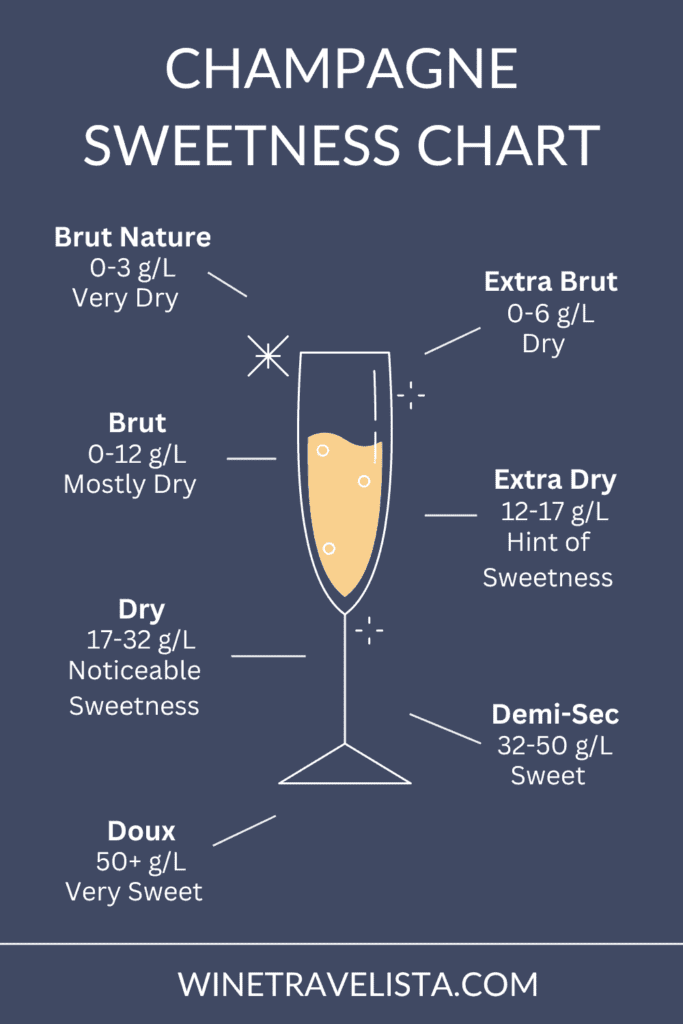
Brut vs. Extra Dry Champagne Sweetness Levels Explained
Sweetness Levels of Sparkling Wine. Our 9 Best Sweet Champagnes. 1) Veuve Clicquot Demi-Sec - Best Overall. 2) Billecart-Salmon Demi Sec Champagne. 3) Laurent-Perrier Harmony Demi-Sec NV. 4) Piper-Heidsieck Cuvee Sublime Demi-Sec. 5) Moet & Chandon Ice Imperial - Best for Summer. 6) Pol Roger Rich Demi-Sec Champagne (Extra Cuvée de Réserve) N.

What are the different levels of sweetness in Champagne? Kazzit US
Champagne is light-bodied, low in alcohol (11-12%), and high in acid. As for sweetness, Champagne can be made anywhere from sweet to extra dry to brut nature. Champagne Tasting Notes. Champagne can vary in flavor depending on the concentration of the three grapes used, whether it is golden or rosé Champagne and the quality of the grapes used.
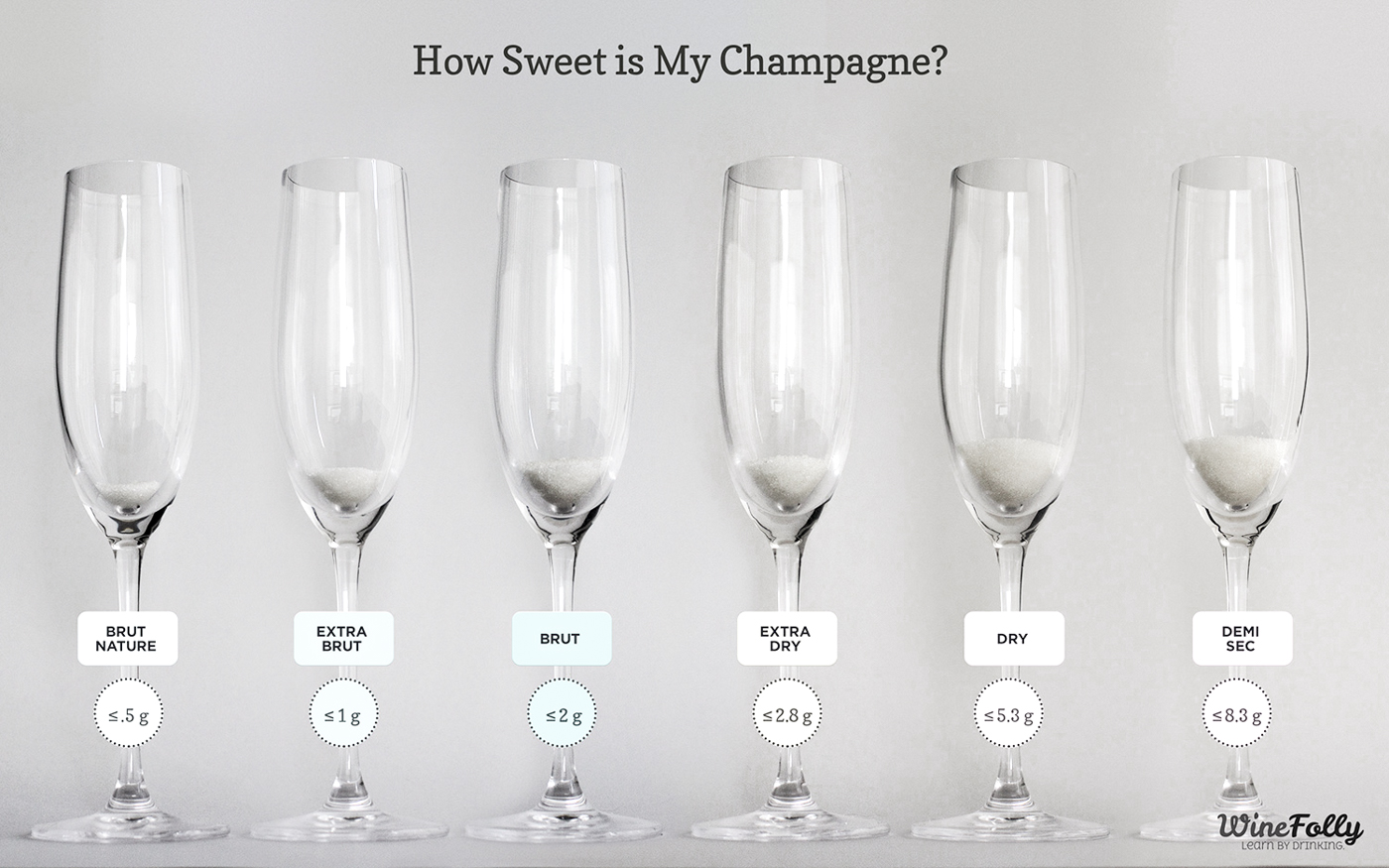
Champagne Sweetness Scale From Brut to Doux Wine Folly
A Champagne called Brut has between 6 and 12 grams per liter of added sugar at what we call dosage. Dosage, as a quick reminder, is the addition of a small amount of sweet liqueur containing wine and sugar before the Champagne is corked, labeled, and released. Those 6 to 12 grams per liter of sugar are roughly the equivalent of about half a.
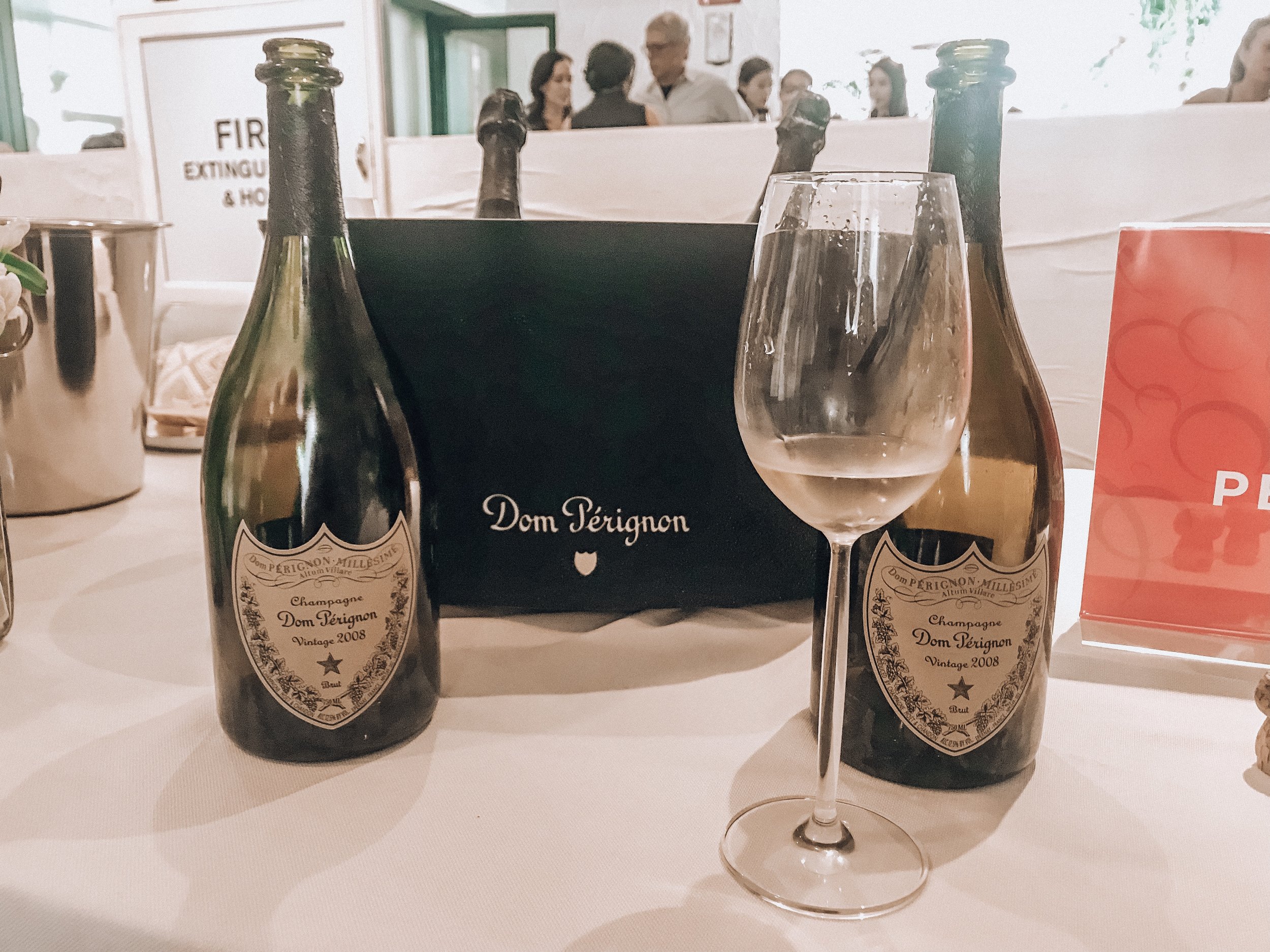
A Sweetness Guide of Champagne from Brut Nature to Doux Different
Champagne Sweetness Scale: From Brut to Doux. Learn what styles of Champagne have the least sugar and compare them to other drinks. Read more. The big names in bubbles - the 7 most well-known and searched makers of Champagne. Types of Champagne.

Tips to Enjoy your Champagne or Sparkling Wine Experience Glass Of Bubbly
Potentially too sweet for some. Billecart-Salmon, one of our favorite Champagne houses in general, is behind this elegant, nuanced demi-sec expression. This wine is actually the exact blend used in their brut reserve, the only difference being the dosage (the demi-sec contains 40 grams of sugar per liter).

Champagne Vintage vs. Non Vintage Joie De Vin The Joy of Wine
Use this guide to navigate wine bottle labels, wine bottle shops or wine tasting rooms and events to better understand the level of sweetness in a bottle of Champagne or sparkling wine. Understand where the sweetness comes from, why sweetness levels matter, what common labelling terms are for sweetness in Champagne and other sparkling wines and how much sugar is associated with each term.

What are the different levels of sweetness in Champagne? Kazzit US
Deutz Demi-Sec Champagne. View On Vivino. Region: A. ABV: 12%. Tasting Notes: Melon, Canned peaches, Cream. This fizzy bottle of sweet Champagne is acid-driven, food-friendly, and extremely versatile on the table. Vibrant acid and flavors of melon, canned peaches, cream, and honey lead to a thirst-quenching finish.
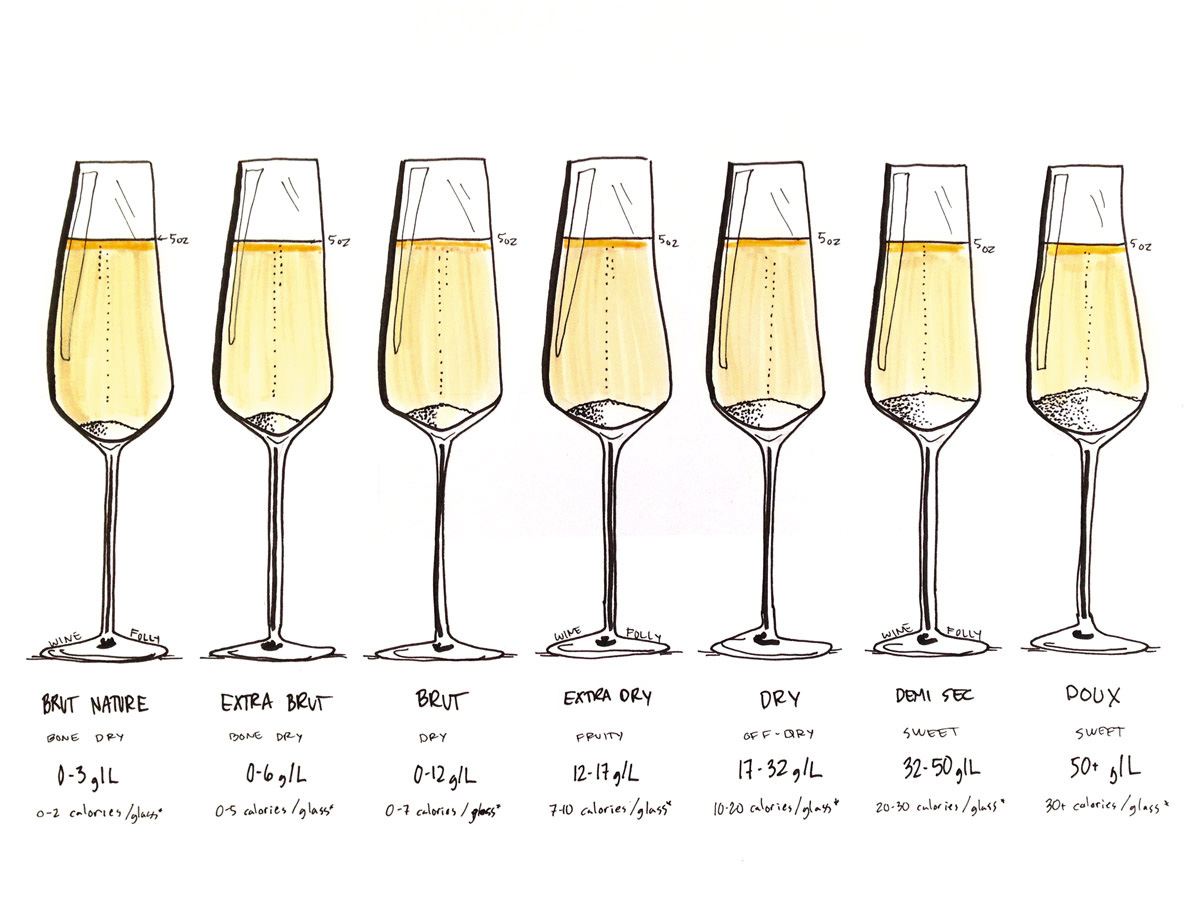
Champagne Sweetness Scale From Brut to Doux Wine Folly
CHEAT SHEET: Sparkling Wine Sweetness Scale. Comparing France's 10 Largest Champagne Houses [INFOGRAPHIC] Classic Champagne Cocktails. French 75. Champagne Cocktail. Mimosa.

Wine Folly's Handy Champagne Guide Wine Folly
Brut Nature, Extra Brut, Brut, Extra-Dry, Dry, and Doux. The sweetness in Champagne is unlike sweetness in wine. It comes in the form of a sweetened "dosage" (a mixture of wine and sugar or grape must) that's added at the end of the second fermentation (the part that makes the bubbles).. The dosage is essential because acidity is so high, it would be undrinkable (or like drinking.
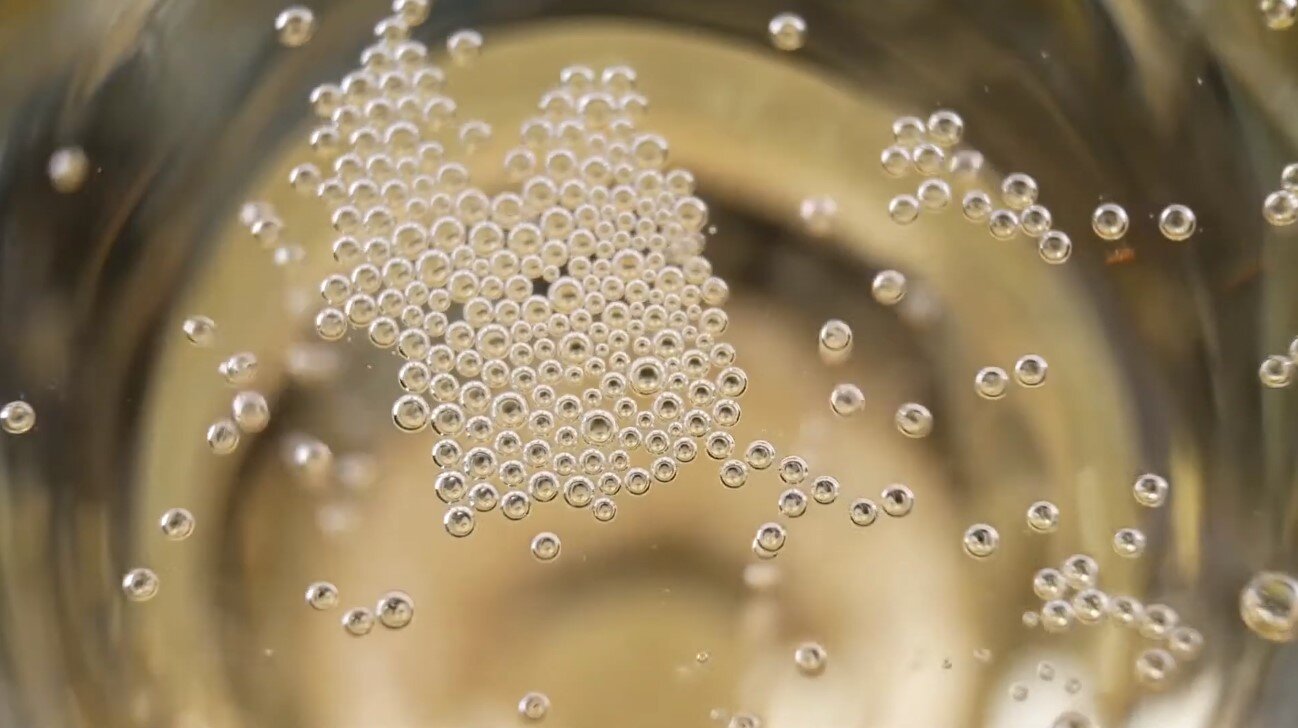
Sweetness levels of Champagne why and how they matter Alti Wine Exchange
In an attempt to show what Champagne sweetness really looks like, we filled each glass with the actual amount of granulated sugar (in grams). Brut Nature 0-3 g/L residual sugar (RS) (aka Brut Zero) 0-2 calories and up to 0.15 carbs for a total of 91-93 calories per 5 oz (~150 ml) serving of 12 % ABV sparkling wine.
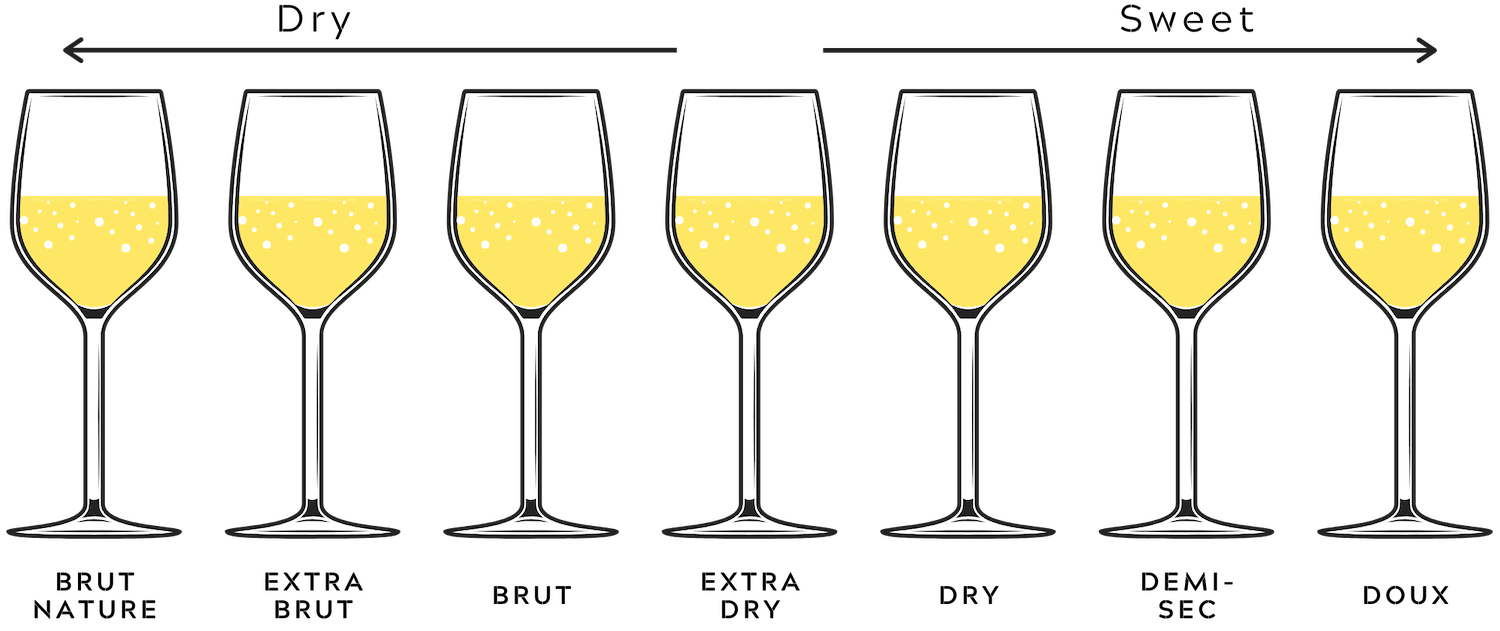
Champagne Complete Guide For Beginners
There are seven levels of sweetness in champagne. They are Brut Nature, Extra Brut, Brut, Extra Sec, Sec, Demi-Sec and Doux. Brut Nature is the dryest style with 0 - 3 grams of sugar per liter wheras Doux champagne has 50 grams of sugar per liter or more. Sweet champagnes were the drink of choice for Russian tsars when bubbly rose to prominence.

Champagne Decoded The Degrees of Sweet The New York Times
Elevate your champagne experience with Andre Beaufort Ambonnay Grand Cru Doux Rosé, a gem among the best sweet champagnes. Crafted with utmost care in the Ambonnay Grand Cru region of France, this exquisite rosé champagne offers a symphony of delightful flavors. The perfect balance of sweetness, derived from a carefully dosed blend.
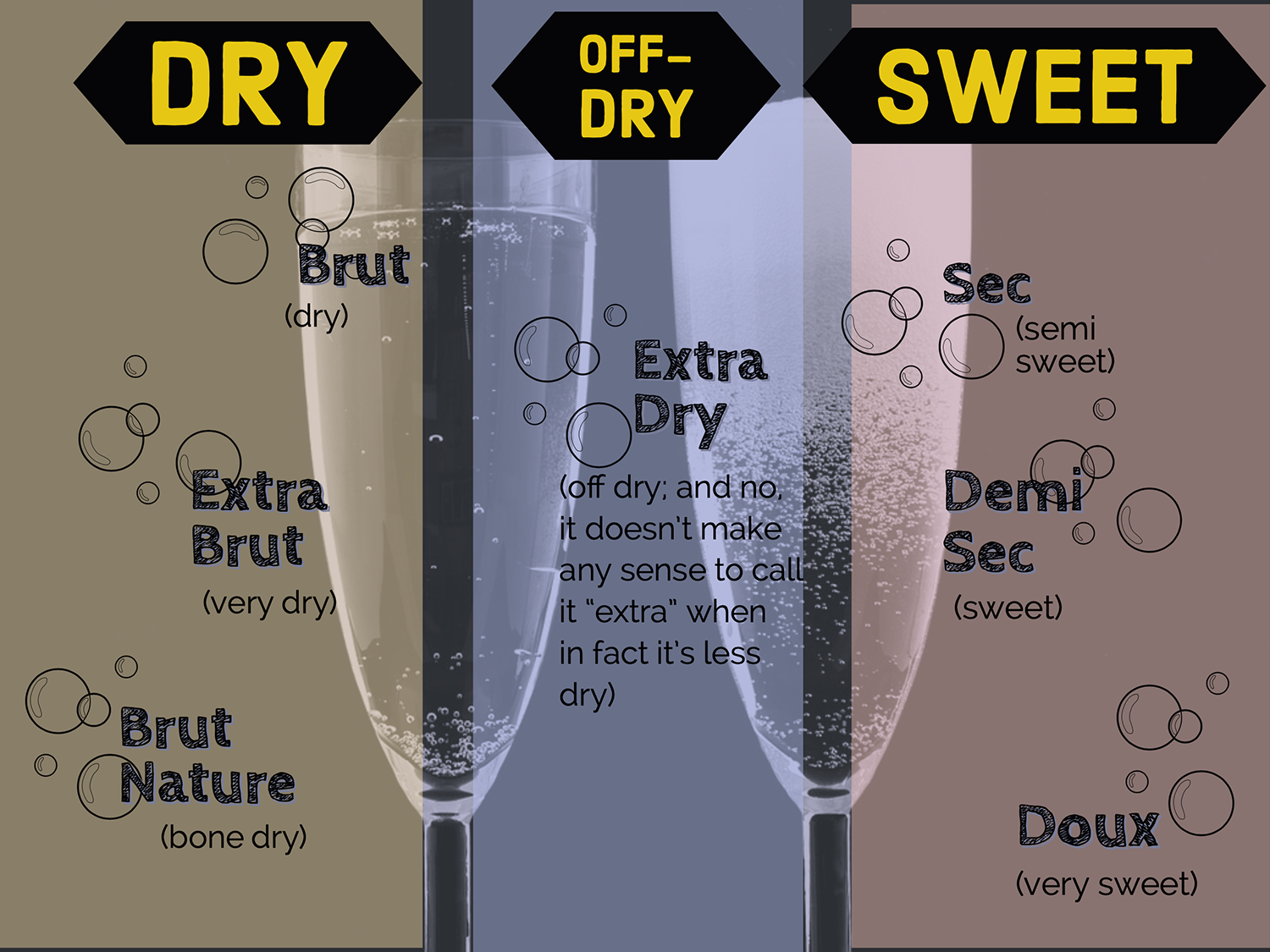
Champagne Sweetness Levels A Girl & Her Somm
Brut Nature or Brut Zero: 0-3g/L. Brut Nature or Brut Zero is the driest champagne out there. This means that Brut Nature is the least sweet of the champagnes, containing less than 3g/L of residual sugar. It's bone dry. Dryer than Death Valley. Most champagne is given a dosage, which is added sugar, before bottling. But not Brut Nature.
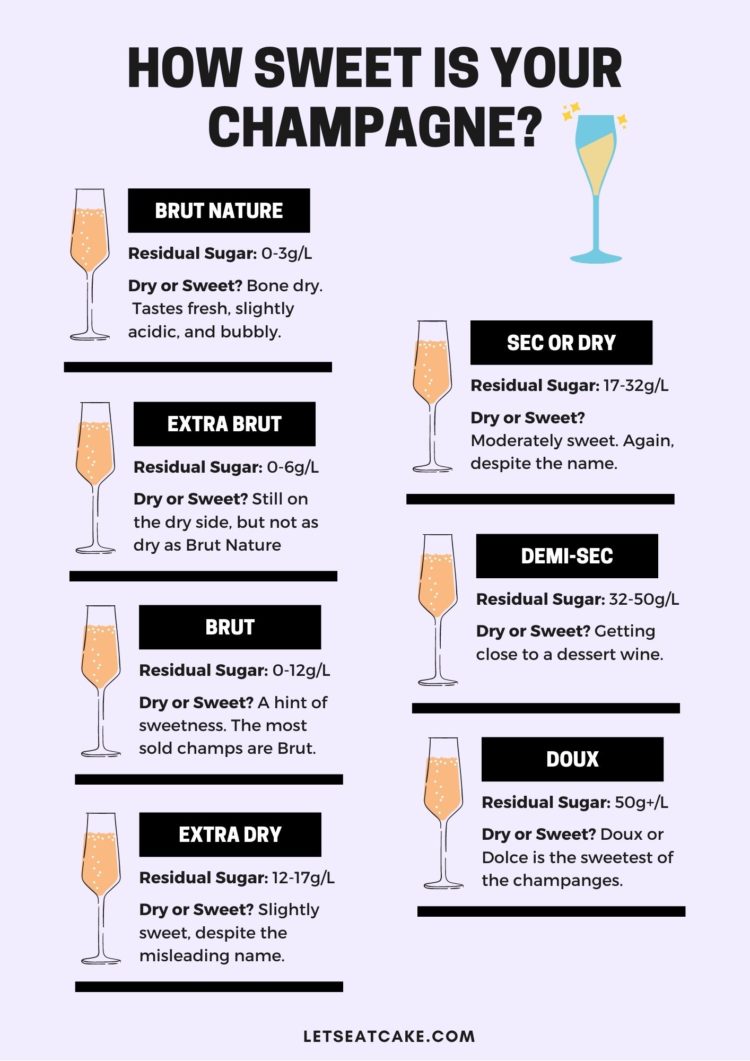
Champagne Sweetness Scale from Brut Nature to Doux Let's Eat Cake
Champagne Grapes and Blends. Only seven grape varieties can be used when making French Champagne. The main three are chardonnay, pinot noir, and pinot meunier. Four lesser-used varieties are also authorized, but not common; they include arbane, petit meslier, pinot blanc, and pinot gris.
/GettyImages-1096609928-f59233694dcb46c1a2a29b7c1009194d.jpg)
The 6 Best Sweet Champagnes of 2022
The levels of the champagne sweetness scale are determined by the dosage, also called liqueur d'expedition or liqueur de dosage, which is a mixture of sugar and wine that is added to the bottle before its final corking. The amount of sugar in the dosage is pre-determined by the winemaker. A few factors influence this decision but, as the.